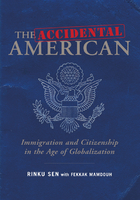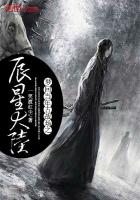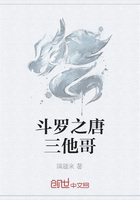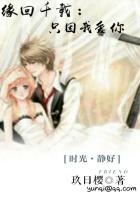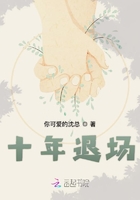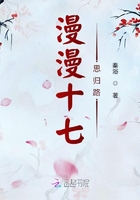Experiment 96. -Examine a piece of the growing young stem of a willow, apple tree or other woody stem that shows several leaf scars. Is the arrangement of the leaves the same asin the corn stalk? Cut a cross section
of this stem and examine it. Does it resemble the cross section of the corn stalk? Strip off a piece of the bark and compare it with the rind of the corn stalk. Examine carefully the smooth, slippery surface of the wood just beneath the bark. This is the cambium layer.
Examine the firm wood beneath
this layer. Where is the pith in this stem? With a lens you may be able to see lines radiating from the pith to the circumference of the stem. These arecalled the pith rays. Cut a lengthwise
section of the stem and examine it.
A PINE TREE.
Notice the erect position of the stem.
Are there any fiber-like bundles as in the corn stalk? Cut off a piece of the stem already examined having the bark on it, or a piece of sunflower stem, and place the end of it in colored water. Allow it to remain for some time and then cut a cross section above the point where it was in the water. Has the water risen and colored this cross section as it did the cross section of the corn stalk?
Stems vary greatly in the positions they assume. Some rise firmly erect from the root, like the oak and the pine; some cling to supports, like the grape and the ivy; some twine around supports, like the bean;some creep upon the ground, like the strawberry; some grow in the form of a thickened bulb like the onion (Fig. 87); some, like the cacti, assume a fleshy leaflike, though leafless form; some, like the nut grass, Johnson grass and witch grass, grow underground and send up shoots, and some stems store up food underground in tubers, like the potato (Fig. 88), from which the next year"s plant may grow.
AN IVY BRANCH.
Notice the tiny root-like appendages by which it clings to its support.
Fig. 87.Fig. 88.
Notwithstanding all the diversity shown by the stem, its principal functions are to support the leaves, so that they will best be exposed to the light, and to conduct the food solutions from the root to the leaves. The part of the stem through which the cell sap flows was seen in Experiments 95 and 96.
There are two great types of stems, one representedby the corn stalk and palm and the other by the willow, sunflower and bean. On account of the structure of the seeds these are called, respectively, monocotyledonous (one seed leaf) and dicotyledonous (two seed leaves). That these differ greatly in their appearance was seen in Experiments 95 and 96, where the two kinds of stems were compared. It was also found in these experiments that, in the first, the red colored water that took the place of the sap rose in the fibrous bundles scattered through the pith, while in the second it rose through the woody tissue within the bark.
Experiment 97. -Examine a cross section of a hardwood tree several years old, and if possible of a palm. Notice the ring-like arrangement of the layers in one and the absence of all such arrangement in the other.
In Experiment 97, when the cross section of a dicotyledonous tree was examined, it was found to be composed of circular rings, but no such rings are found in the cross section of the monocotyledonous tree. When later we examine the seeds of corn and bean, we shall find that they also differ very much.
A BANYAN TREE.
Some of its branches descend, and take root in the ground, and so appear like stems.
When the bark is removed from a stem, like the willow or apple, the soft smooth layer underneath is found to be composed of living cells. This is called the cambium layer. During the season of growth, these cells are continually subdividing and formingnew cells, thus adding to the thickness of the stem. The age of a tree canbe determined by counting these rings. No suchlayer is found in the monocotyledonous stems. Grafting (Fig. 89) andbudding (Figs. 90 and 91)
Fig. 89.
Fig. 90.
Fig. 91.
are processes of bringing the cambium layers of two trees of similar kinds in contact and keeping them protected so that they will grow together. In this way, many of our finest species of fruit are propagated.
Experiment 98. -Examine several growing stems or twigs which have buds upon them and notice how the buds are arranged. Is the arrangement the same in all? If these buds grew into twigs or leaves, would they shade each other? Is there a bud at the end of the twig or stem?
If we examine the tip of a growing stem or twig, we shall find a bud. In most of the trees and shrubs of temperate regions a terminal bud is formed at the close of the growing season, and from this the shoot continues to grow the following season. Buds are also found along the length of the stem and branches, as was seen in Experiment 98. These are lateral buds and, since they are usually found in the axis of the leaf, at the angle formed by the leaf and stem,they are called axillary. In some trees the
terminal buds die at the end of the growing season, and the next year"s growth is due to one of the axillary buds.
94.Leaves. -If we examine the ar-
rangement of the leaves on a plant or tree, we shall see that they do not lie one di- rectly above the other, but that they are so arranged as not to shade each other. Theirposition generally is such that the broad
DIFFERENT FORMS
WHICH LEAVES ASSUME
upper surface of the leaf receives the strong light rays perpendicularly upon it. To accomplish this, the leaves in many trees are arranged spi- rally around the stem.
The stem of the leaf itself, in some parts of the tree, often grows long and twists about, in order to push the leaf out to the light and yet not let it be wrenched away by the wind. The horse-chestnut is such a leaf. In some plants, like the sunflower, the younger leaves follow the sun all day. In other plants the rays of the sun seem to be too bright in the middle of the day and the leaves are then held edgewise to the light.


